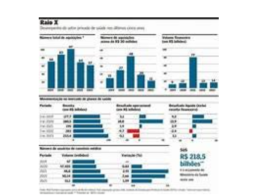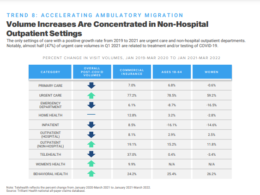Health Transformation Foundation (HTF)
Joaquim Cardoso MSc
January 18, 2024
This is an Executive Summary of the article “Why the Tech Industry Won’t Disrupt Health Care”, published by Harvard Business Review, witteh by
by John Glaser, Sara Vaezy, Janet Guptill, on February 16, 2024
What is the Message:
Despite the potential for digital disruption in the health care industry, established health systems are unlikely to be displaced.
Instead, the winners will be those health systems that collaborate with digital tech companies.
Executive Summary:
Health care in the United States, despite its shortcomings, is not as ripe for disruption as it may seem.
The industry’s complexity, fragmentation, and ambiguous business model present significant barriers to new entrants.
While digital technology advances could address some issues, they are not likely to displace incumbent health systems.
Instead, health systems that partner with digital tech companies, leveraging their strengths while adopting new technologies, are predicted to succeed.
Examples and Statistics:
Examples of industries disrupted by digital innovation include video and record stores, neighborhood movie theaters, and travel agents.
However, some industries, like banking and retail (with Walmart being the world’s second-largest online retailer), have successfully incorporated digital innovations into their operations.
Conclusions:
Despite the apparent need for significant change in U.S. health care, tech-savvy entrants have not yet managed to displace incumbent health systems.
This trend will continue, with U.S. health systems largely retaining their hold on delivering a full spectrum of care at scale.
Recommendations:
To remain financially viable and thrive, health systems need to adopt a playbook similar to successful incumbents in other industries:
- leverage their historic strengths while adopting new technologies and modifying their business models to take full advantage of these innovations.
This approach will allow them to meet the increasing demands of care delivery in the digital age.
Some examples cited in the article
Eastman Kodak: This one-time Fortune 500 company was disrupted by digital photography. Despite being a giant in the photo film industry, it failed to adapt to the digital revolution and was eventually outcompeted.
Banking Industry: Despite the move to online banking, the average large bank is 138 years old. This suggests that the banking industry has successfully incorporated digital innovations into their operations without being displaced by tech-savvy newcomers.
Walmart: The world’s largest brick-and-mortar retailer has also become the second-largest online retailer. This shows how an incumbent can leverage digital technologies to enhance its business model and remain competitive.
Amazon’s Acquisition of One Medical: This is an example of a tech company making inroads into the health care industry. However, the authors argue that such moves are unlikely to displace established health systems, but rather suggest a trend towards partnerships between tech companies and health systems.
These examples illustrate how industries can respond differently to digital disruption, with some being displaced while others successfully incorporate digital innovations. They serve as a backdrop to the authors’ argument that established health systems are unlikely to be displaced by digital disruption, but rather, the ones that adapt and form partnerships with tech companies will thrive.













